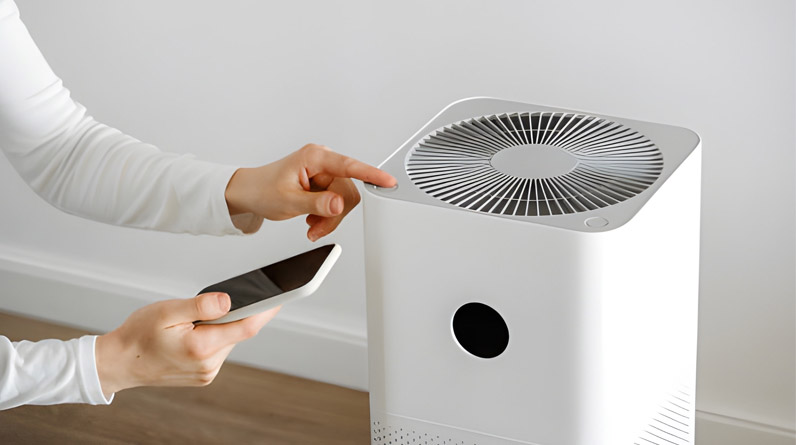The smart home revolution isn’t coming—it’s already here. In 2025, smart gadgets have evolved from luxury novelties to essential tools that genuinely improve our daily lives. But with thousands of options flooding the market, which devices actually deliver on their promises of convenience, efficiency, and cost savings?
According to recent industry data, the global smart home market is projected to reach $174 billion by 2025, with the average household now owning at least 7 connected devices. However, not all smart gadgets are created equal. Some offer marginal improvements, while others can transform your routine, slash your utility bills, and even improve your health.
This comprehensive guide explores ten smart gadgets that stand out in 2025—not just for their technological sophistication, but for their proven ability to make everyday life genuinely easier, more efficient, and more enjoyable.
1. Smart Thermostats: Your Personal Climate Control Expert
Smart thermostats like the Ecobee Smart Thermostat Essential (2025 Edition) and Nest Learning Thermostat have matured into indispensable home management tools that pay for themselves.
Why They’re Game-Changers
Unlike traditional thermostats that require manual adjustment, these intelligent devices learn your schedule and preferences, automatically optimizing your home’s temperature throughout the day. The result? A comfortable home that doesn’t waste energy heating or cooling empty rooms.
Key Benefits:
- Reduce energy bills by up to 15% annually (that’s roughly $150-200 per year for the average household)
- Remote control via smartphone apps—pre-cool your home before you arrive
- Seamless integration with Alexa, Google Assistant, and Apple HomeKit
- Eco modes that automatically reduce consumption when you’re away
Real-World Impact: A family in Phoenix reported saving $287 on their annual cooling costs after installing a smart thermostat, with the device paying for itself in just eight months.
2. AI-Powered Video Doorbells: Security Meets Intelligence
The 2025 generation of video doorbells from brands like Ring and Arlo has incorporated advanced AI that fundamentally changes home security.
Beyond Basic Monitoring
Today’s smart doorbells don’t just record video—they understand what they’re seeing. AI algorithms can differentiate between a package delivery, a neighbor stopping by, or a potential security threat, sending you meaningful alerts instead of bombarding you with notifications every time a car drives past.
Advanced Features:
- Person detection with facial recognition capabilities
- Package detection with delivery time stamps
- Two-way audio with noise cancellation
- Night vision with enhanced clarity
- Integration with smart locks for remote access control
Pro Tip: Pair your video doorbell with a smart lock to create a complete entry system. You can remotely grant access to trusted visitors, delivery personnel, or service providers without being home.
3. Robot Vacuum and Mop Combos: The Ultimate Cleaning Solution
Devices like the Eufy Robot Vacuum and Roborock S8 series have evolved into comprehensive floor care systems that handle both vacuuming and mopping with minimal human intervention.
Smart Cleaning Technology
Modern robot vacuums use advanced mapping technology to navigate your home efficiently, learning the layout and identifying high-traffic areas that need extra attention.
Time-Saving Features:
- Automatic room mapping and multi-floor memory
- Dual functionality—vacuum and mop in one pass
- Self-emptying bases that hold weeks of debris
- Scheduled cleaning when you’re away
- Obstacle detection to avoid stairs and delicate items
The Math: If you spend 3 hours per week on vacuuming and mopping, a robot vacuum saves you approximately 156 hours annually—that’s nearly a full week of your life returned to you.
4. Smart Air Purifiers: Breathe Easier, Sleep Better

Smart air purifiers from Dyson Pure Cool and Molekule have become essential for health-conscious households, particularly in areas with poor outdoor air quality or for families with allergies.
Intelligent Air Quality Management
These devices continuously monitor your indoor air quality and automatically adjust filtration levels based on detected pollutants, pollen, and particulates.
Health Benefits:
- Remove 99.97% of airborne allergens, dust, and pollutants
- Real-time air quality monitoring with smartphone alerts
- Automatic intensity adjustment based on detected particles
- Whisper-quiet operation suitable for bedrooms
- Filter replacement reminders
Research-Backed Impact: Studies indicate that poor indoor air quality can reduce sleep quality by up to 30% and impair cognitive function. Smart air purifiers address this silent problem, with users reporting improved sleep and reduced allergy symptoms within weeks.
5. Automated Plant Care Systems: For Those Without a Green Thumb
Automated plant care systems represent one of 2025’s most innovative smart home categories, perfect for busy professionals or frequent travelers who want to enjoy greenery without the constant maintenance.
Set It and Forget It Gardening
These systems monitor soil moisture, light levels, and even nutrient content, automatically watering your plants and sending alerts when attention is needed.
Smart Features:
- Self-watering systems with precise moisture control
- App connectivity for remote monitoring
- Light and temperature sensors
- Water conservation—delivers only what plants need
- Plant-specific care recommendations
Environmental Impact: Traditional watering often wastes up to 50% of water through over-watering or evaporation. Automated systems optimize water usage, helping both your plants and the planet.
6. Smart Kitchen Composters: Sustainable Living Made Simple
Smart kitchen composters like the Lomi and FoodCycler have transformed food waste management, making composting accessible even for apartment dwellers.
From Waste to Resource
These countertop devices quickly break down food scraps into nutrient-rich compost or fertilizer, eliminating odors and reducing landfill waste.
Why They Matter:
- Process food waste in 3-8 hours (vs. months for traditional composting)
- Advanced odor control systems eliminate unpleasant smells
- Compact designs suitable for any kitchen
- Reduce household waste by up to 30%
- Create fertilizer for gardens or houseplants
Environmental Significance: Food waste in landfills generates methane, a greenhouse gas 25 times more potent than carbon dioxide. Smart composters help reduce your carbon footprint while creating valuable garden nutrients.
7. Apple Watch Ultra 3: Your Personal Health Guardian
Wearable technology has transcended fitness tracking, and the Apple Watch Ultra 3 exemplifies this evolution with comprehensive health monitoring capabilities.
More Than Just a Smartwatch
This device serves as a medical-grade health monitor, communication hub, and personal assistant rolled into one elegant package.
Health and Convenience Features:
- Advanced heart rate monitoring with irregular rhythm notifications
- Blood oxygen level tracking
- Sleep quality analysis with personalized recommendations
- Fall detection and emergency SOS
- LTE connectivity for calls and texts without your phone
- Extended battery life supporting multi-day use
Life-Saving Technology: Apple has documented numerous cases where Watch alerts led to early detection of serious medical conditions, including atrial fibrillation and sleep apnea.
8. Smart Water Management Systems: Protect Your Home and Wallet
Smart water management systems have emerged as crucial home protection devices, offering leak detection and water usage monitoring that can prevent catastrophic damage.
Early Warning System
These systems monitor your home’s water flow 24/7, detecting even minor leaks before they become major problems.
Protection Features:
- Real-time leak detection with automatic shut-off capabilities
- Detailed water usage analytics by fixture
- Smartphone alerts for unusual water activity
- Pressure monitoring to identify potential pipe issues
- Integration with home insurance for potential premium discounts
Financial Impact: The average home water leak costs $10,000 in repairs. Smart water management systems can detect problems early, with users reporting savings of thousands of dollars in prevented damage. Additionally, monitoring water usage typically reduces consumption by 10-15%.
9. Interactive Smart Mirrors: Your Morning Command Center
Interactive smart mirrors represent the futuristic vision of connected homes, combining functionality with daily convenience.
More Than Reflection
These mirrors display essential information while you prepare for the day—weather, calendar appointments, news headlines, and even health metrics.
Integrated Features:
- Customizable digital display with weather, news, and schedules
- Automatic de-fogging for clear reflection
- Built-in lighting with adjustable color temperature
- Voice assistant integration
- Health tracking integration (weight, BMI, body composition)
Efficiency Gain: Smart mirrors consolidate multiple morning routines—checking your phone for weather, calendar, and news—into a single, hands-free experience while you’re getting ready.
10. Portable Solar Charging Stations: Energy Independence On-Demand
Portable solar charging stations have become essential for both everyday use and emergency preparedness in 2025.
Renewable Power at Your Fingertips
These devices harness solar energy to charge multiple devices simultaneously, reducing reliance on grid electricity and providing crucial backup power during outages.
Versatile Benefits:
- Charge multiple devices simultaneously using renewable energy
- Perfect for patios, decks, or outdoor entertainment areas
- Emergency backup power during storms or outages
- Portable designs for camping or travel
- Reduce household energy consumption and utility bills
Storm Season Essential: With extreme weather events increasing, portable solar chargers provide peace of mind, ensuring you can stay connected and powered even during extended outages.
Smart Gadgets Comparison: At a Glance
| Gadget Category | Primary Benefit | Average Annual Savings | Setup Difficulty |
|---|---|---|---|
| Smart Thermostat | Energy Efficiency | $150-200 | Easy |
| Video Doorbell | Security | Prevention of theft/damage | Moderate |
| Robot Vacuum | Time Savings | 156 hours/year | Easy |
| Air Purifier | Health | Reduced medical costs | Easy |
| Plant Care System | Sustainability | 50% water savings | Easy |
| Kitchen Composter | Environmental | Reduced waste fees | Easy |
| Smartwatch | Health Monitoring | Early health detection | Easy |
| Water Management | Damage Prevention | $1,000s in prevented damage | Moderate |
| Smart Mirror | Time Efficiency | 15 min/day saved | Moderate |
| Solar Charger | Energy Independence | $50-100 | Easy |
Making Smart Choices: How to Select the Right Gadgets
With so many options available, how do you decide which smart gadgets deserve a place in your home? Consider these essential questions:
Will It Actually Save You Time or Money?
The best smart gadgets offer tangible returns on investment. Calculate potential savings—whether that’s reduced utility bills, prevented damage costs, or hours of your time returned.
Does It Solve a Real Problem?
Avoid gadgets that solve problems you don’t have. Focus on devices that address genuine pain points in your daily routine, like high energy bills, security concerns, or time-consuming chores.
How Easy Is It to Integrate?
The most effective smart home ecosystem uses devices that work together seamlessly. Check compatibility with your existing devices and preferred voice assistants before purchasing.
What’s the Long-Term Value?
Consider ongoing costs like subscriptions, replacement parts, and energy consumption. A cheaper device with high operating costs may ultimately cost more than a premium option with lower maintenance needs.
The Future of Smart Living
Smart gadgets in 2025 represent more than technological novelty—they’re practical tools that demonstrably improve quality of life. From reducing energy consumption and preventing costly home damage to reclaiming precious time and monitoring health, these devices offer real value.
The key to successful smart home integration is starting with devices that address your specific needs and building from there. Whether you’re focused on energy savings, security, health, or simply reclaiming time for what matters most, the right smart gadgets can transform your daily routine.
As we look ahead, the integration of AI and machine learning will only deepen, making these devices more intuitive and valuable. The homes of tomorrow aren’t just connected—they’re intelligent, responsive, and designed around the people who live in them.
Final Thoughts
The smart home revolution isn’t about having the most gadgets—it’s about having the right ones. Each device on this list has proven its worth through tangible benefits: lower bills, better health, more free time, and greater peace of mind.
Start with one or two devices that address your biggest pain points. As you experience the convenience and savings firsthand, you can expand your smart home ecosystem strategically. The future of comfortable, efficient living is here—and it’s more accessible than ever.
Which smart gadget will you try first? The one that saves you the most money, time, or stress is probably the right place to start.


